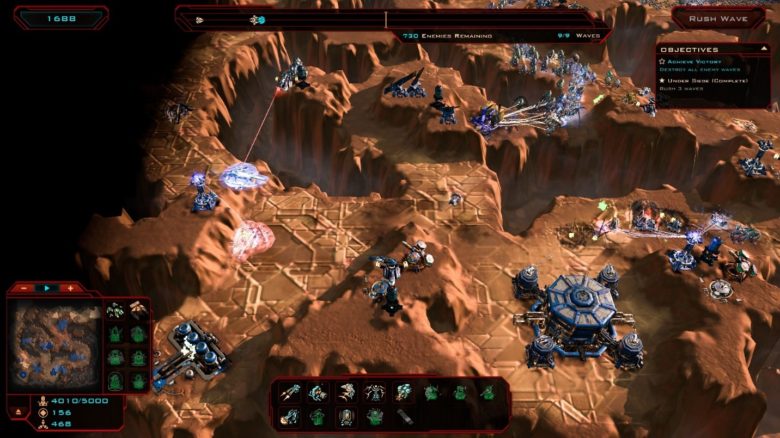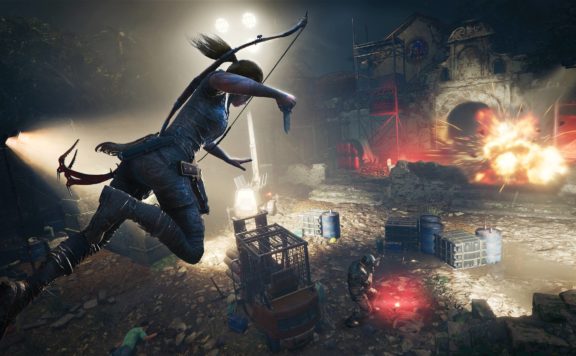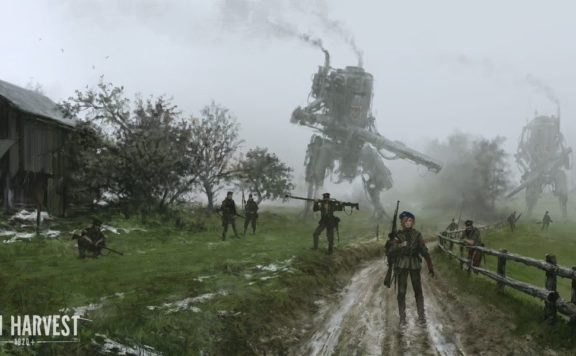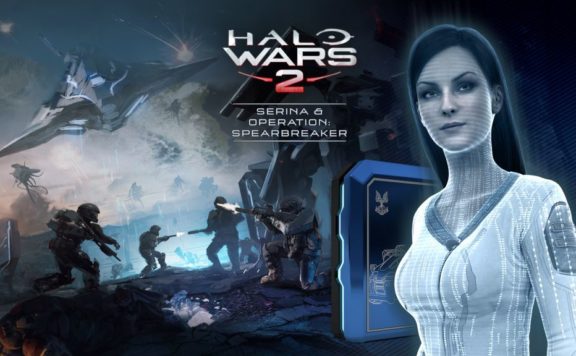Writer’s note: I was offered a Siege of Centauri key for the preview, but had already purchased the game as a Founder.
It’s a weird time to be an RTS aficionado. There are a lot of games coming out these days, but traditional RTS like War Party or Bannermen seem to struggle to gain traction while city builders/survival games like Frostpunk or They Are Billions or the upcoming Conan Unconquered seem to have a more solidly positive interaction.
To that point, and seeing the greater apparent success of their 4x like Galactic Civilizations III or their action/adventure game Star Control: Origins it’s not substantially surprising that Stardock would want to try their hand games that don’t fall into the controversial bucket of RTS. Furthermore, it’s kind of unsurprising that Stardock would want to leverage the tech behind their large-scale RTS, Ashes of the Singularity: Escalation. Add those 2 things together, and you can see how Stardock would conceive of their tower defense game, the recently-released Siege of Centauri.
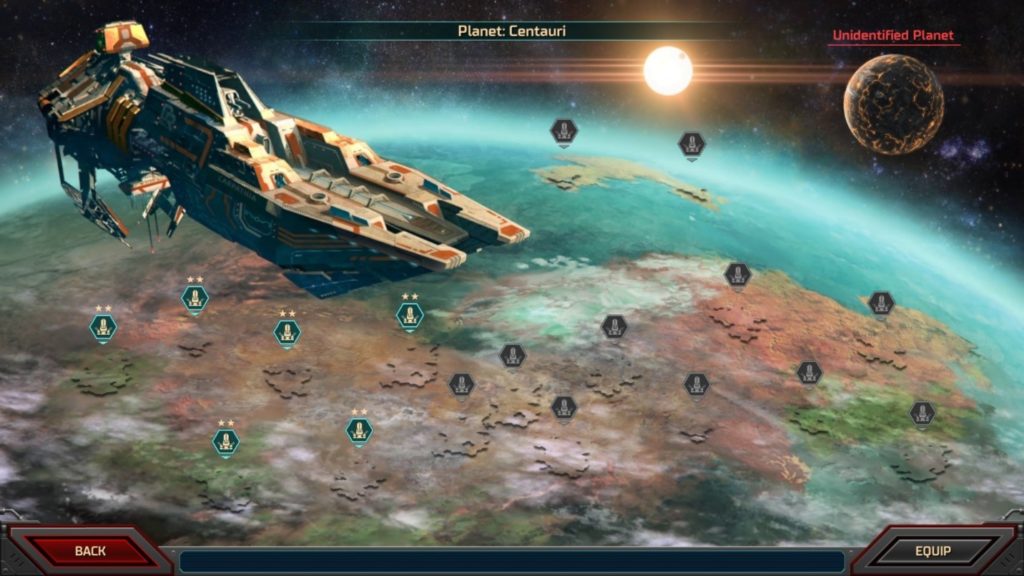
Set in the same universe as Ashes of the Singularity, Siege of Centauri is a tower defense game that wants to throw a massive crap-ton of units at you. And as a selling point, that’s not a bad start. But fortunately for Stardock and for us, they haven’t stopped there. Siege of Centauri wants to be a tower defense that feels like an RTS game.
As is not uncommon for tower defense scenarios, enemies path down a number of pre-defined routes to get to your command center – in Siege of Centauri, this is the Colony. And you have towers that are better against certain enemy types: these towers hurt flying enemies, those deal area damage, and this one lets off a massive shot every once in a while, et cetera. But the whole thing has kind of some more serious RTS overtones than you see in your average tower defense game. Which is definitely a nice twist.
As in the parent game Ashes of the Singularity, you’re managing 2 resources: metal, in this case used for summoning defensive structures, and Radioactives, in this case used for instant-cast global abilities. And this is where things can start to get interesting.
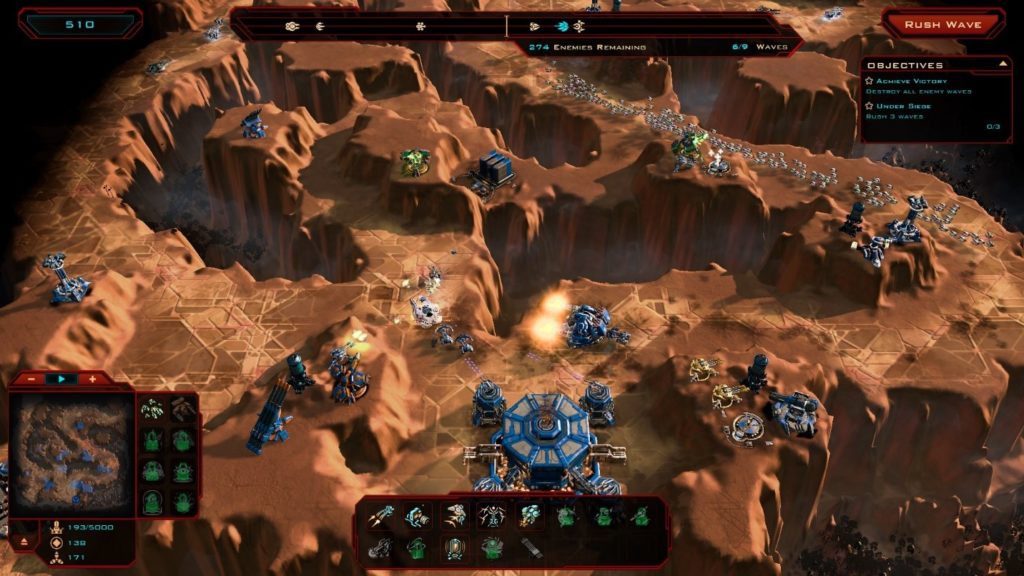
First off, the enemies in Siege of Centauri tie in pretty closely in most cases to units seen in Ashes of the Singularity. This is a bonus because you get a lot of interesting rules on the enemies. There are massive units either with armor or forcefields, that have to have unique weapon types to deal with, and there are hordes of medium-weight and smaller enemies, again potentially with either damage resistance or regenerating forcefields which certain weapon types might ignore. A horde of tiny units with forcefields is a much different type of threat than a swarm of air units (who in this game totally ignore the ground paths and home straight in for your base and other economic structures – in many tower defense games I’ve played, air units will stick to paths like their ground-bound allies, only being vulnerable to different weapon types).
So, while the idea of massive swarms of enemies alone might not be that theoretically impressive, the reality of having to deal with either 800 (literally) tiny drones or a single massive enemy unit that completely ignores 99% of incoming damage, does add up to be a satisfying enough dichotomy to render it interesting and challenging. I’ve typically had to play each of the later levels – there are currently 6 in the game, 2 added very recently – several times before I hit upon a pattern that allows me to succeed against the different threats each map throws your way. Part of this might be my reticence to play on any difficulty rating lower than Challenging.
On many maps you’re asked to defend your Metal factory and Radioactives factory, which provide passive income for these 2 unique resources, in addition to your Colony. Lose one of these, and your overall income can be seriously hampered. And these are often in more exposed areas of the map, making them prime targets for passing enemy units. And worse, losing one of these occasionally opens up new pathways for enemies to traverse, giving them a shortcut to your colony.
As of right now, there’s a somewhat limited array of pre-defined turrets for you to use, and they’re unlocked relatively slowly. I’ve played the whole current extent of the game a handful of times and I still have yet to unlock the upgraded version of some of the common turrets, though I’ve unlocked all of the base versions of each that’s currently in the game – I believe the plan in the long term is to allow players to craft their own loadout for turrets, to bring a ‘deck’ of them into an individual match.
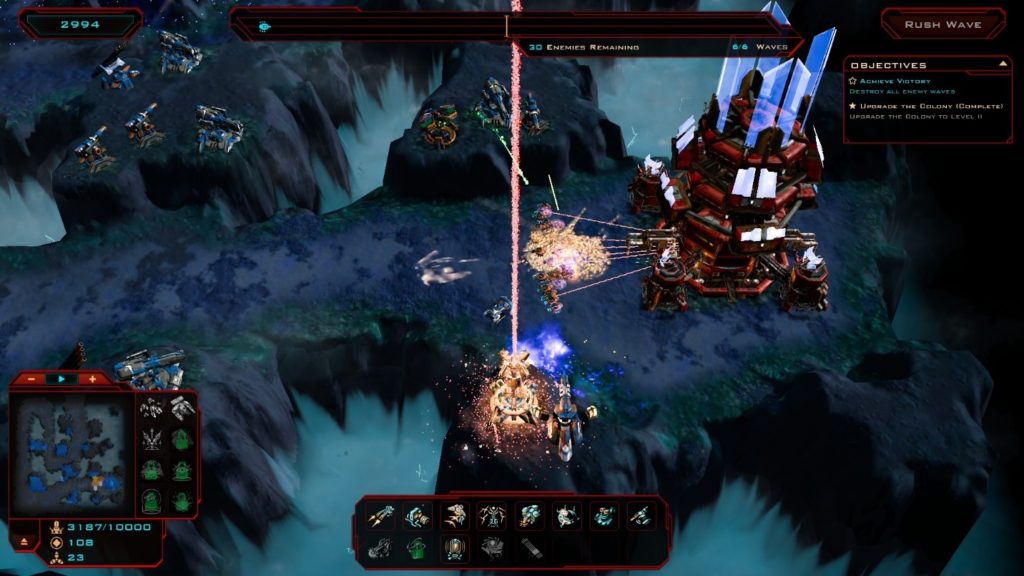
Some of the most fun I’ve had so far is with the offmap abilities. I think I’m still unlocking these, but the 3 I’ve opened up so far are the high point of Siege for me. You have a small sortie of tanks you can call onto the map, with a cooldown short enough that you can end up with a small army of them over time. Being able to have a small RTSlike defense force is always something I like to see, and with Siege it’s great fun to drive your tanks around to respond to the inevitable weak points in your defenses. Likewise, the mighty Marvin ‘bot, who has a short lifespan once summoned, but can shoot missile swarms at weaker enemies and can just about stand toe-to-toe with some of the heavier hitters, is one of the best parts of the game for me.
Managing the timing and order of turrets and upgrades feels more challenging for me in Siege than it is in many other tower defense games, though I’m not entirely sure why. In most tower defense games, I expect to be able to entirely stop enemies from reaching their goal in the earlier stages of a map, with the challenge being to keep pace with the increasingly strong and numerous waves of enemies. In Siege, my strategy is to usually minimize the damage I sustain in the earliest stages of a map, while eventually stopping enemies as they go along their merry way. Interestingly, medium enemies are some of the more frustrating ones, as they’re often too numerous to be dealt with by heavy weapons while being too strong to be easily taken down by early-game AOE options, and tend to be on the faster side.
There are some frustrating things about the game in its current state though: first, enemies keep moving when they die, and evaporate after a moment. This can make telling whether an enemy has survived or died just frustrating and confusing enough to cause rash decisions in terms of turret placement, ability activations, et cetera.
Also, turret descriptions and counter information is currently a little unclear: while it’s great that a turret might emit 1.66 giga-joules of streamed directed energy, it doesn’t necessarily tell me what I need to know in terms of how to use it or what it’s good against. The UI can also be a bit scattered, with the “Rush Wave” option sitting at the extreme top right of the screen, unit health bars or duration timers present only when selected, and unclear hotkeys obscuring some vital pieces of information.
Lastly, I will say that while I don’t have the most robust gaming rig in the world, I can usually run games on fairly reasonable settings. This doesn’t seem to be the case with Siege of Centauri, which requires me to bottom out the graphics settings to get a decent framerate. I hope this is something they can optimize.
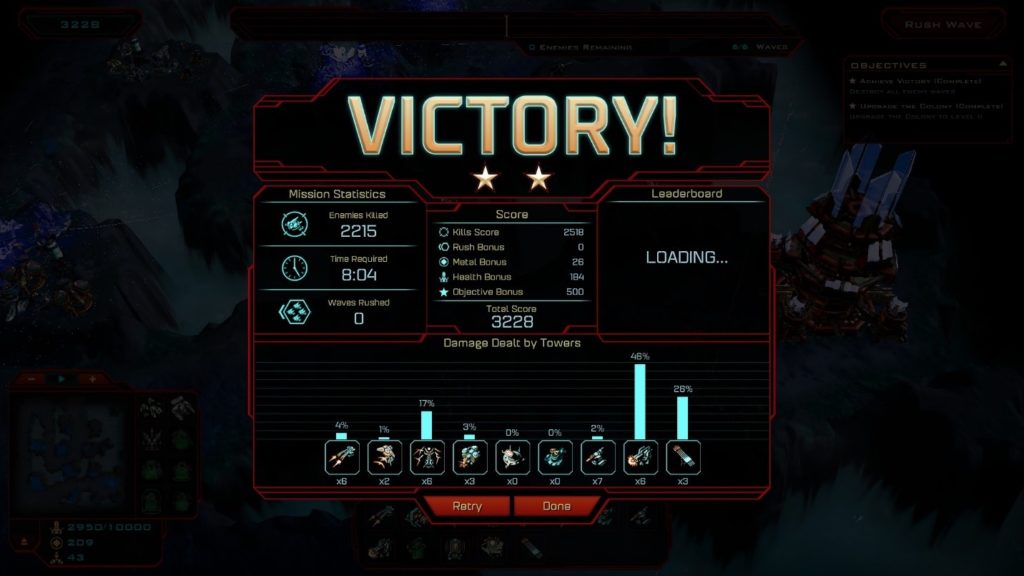
Still, at $10 and still in the earliest days of Early Access, there’s a long road ahead of the game. And with its clever unit/weapon counter system, the interactivity of its units and offmap/global abilities, and the fact that it’s leaning towards being an RTS, I’m not sorry I bought it and looking forward to seeing what Stardock does from here.

